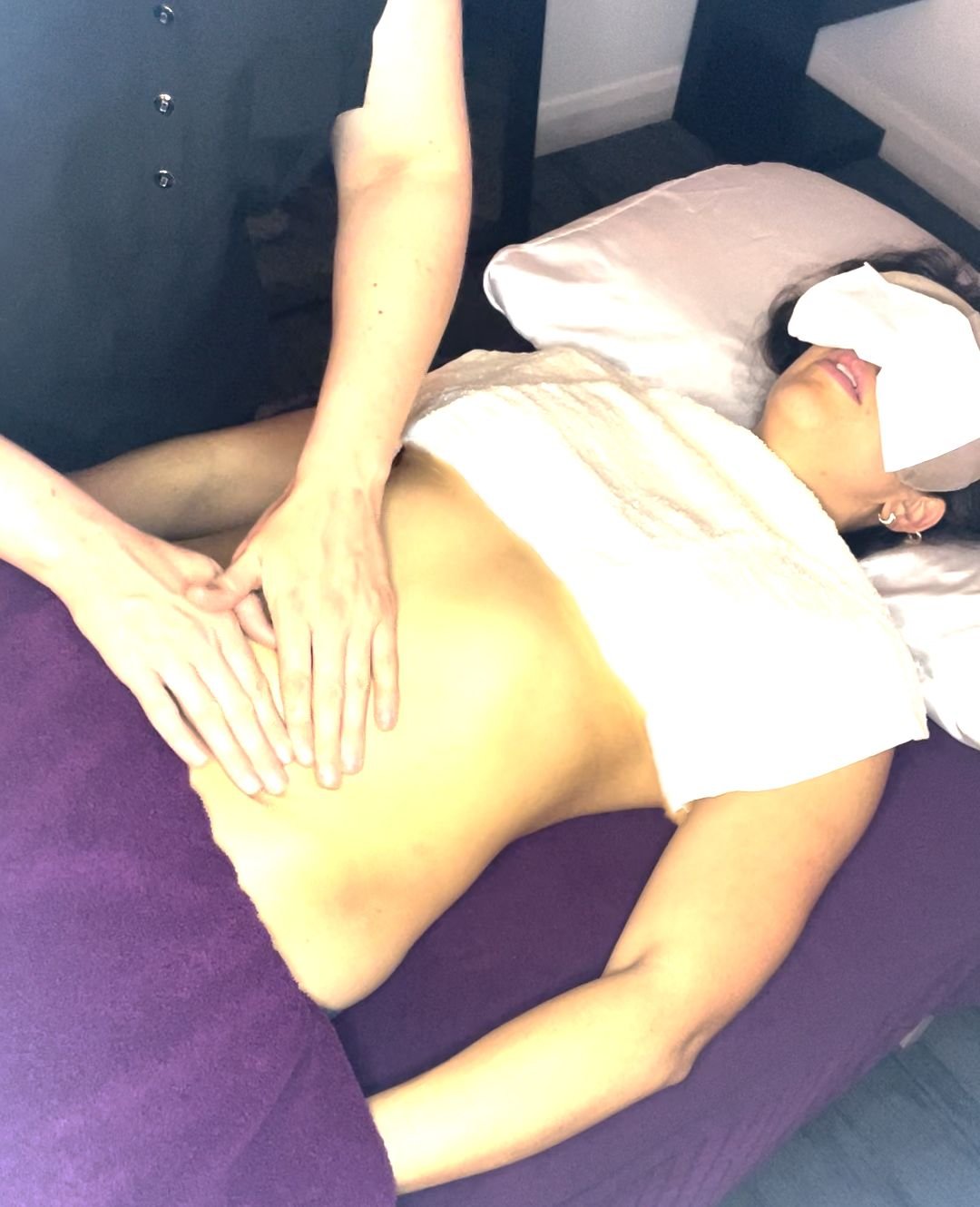Everything you need to know about… Lymphatic Drainage
Lymphatic Drainage Explained…
Lymphatic drainage is widely used and extensively researched, and been around for centuries, but has recently hit the headlines with celebrities discovering its amazing benefits. Most recently, Zoe Ball, posted photographic evidence of the before and after effects on her “menopausal fluid retention” around her stomach. Is this real and really that effective?
Yes, a lymphatic drainage massage is used to assist the lymphatic system in moving pooled fluid towards the lymph nodes. If you do have excess fluid then this can effectively be moved within the session. However, please be aware that this treatment only works on superficial lymph fluid, so if this is the cause of your stomach bloating then it will help.
Exercise is also effective at helping the lymphatic system perform well and there are particular moves in yoga that really help, one example is, legs up the wall. However, sometimes that fluid just isn’t budging especially if it is caused by deeper issues (hormones, menopause etc).
Tried everything?
A Lymphatic Drainage Massage can speed up the drainage of lymph 20x faster than it works normally. YES 20X!
How is this achieved?
Lymphatic drainage does exactly what it says on the tin, draining the lymph, containing waste, effectively to the lymph nodes where it is removed naturally by the body or cleaned to re-enters the body's circulatory system, to be used again.
The lymphatic system is an essential part of our body, helping to clear waste and maintain our immune system, but it isn’t as commonly understood compared to our circulatory system which is the blood pumped by the heart.
Similarly to the cardiovascular system, the lymphatic system also has a network of vessels around the body and its role is to collect waste material from the blood, infection fighting lymphocytes (white blood cells), and fats from the digestive system, transporting them through the vessels in a clear fluid. These materials need to be removed from the body and the important job of the LS is to facilitate this removal.
One major difference between the cardiovascular system and lymphatic system is that unlike the heart pumping the blood in the CV system there is no pump for the LS. The LS is solely reliant on movement to move this fluid around the body and prevents the pooling of waste and fluid in certain areas such as the stomach, legs, arms and ankles.
What else can cause fluid retention?
So we have considered a lack of movement as one cause for fluid retention, but what other causes are there?
It is important to rule out some medical issues that could be causing fluid retention, so please see your GP if this is a sudden unusual onset for you. It could indicate problems with the kidneys, heart or lungs. But if all of these are well fluid can also build up due to prolonged standing and sitting (linked to lack of movement) high sodium diets or high fat diets, certain medications - so check common side effects, and changes in hormones e.g. pregnancy and menopause.
What to expect in your massage session.
It is important to note that there are different types of lymphatic drainage technique so each therapist may have a slightly different technique. There are two main styles to recognise and decide which you would like.
Manual Lymphatic Drainage - this is a light technique, without the use of oil, with a soft pressure required because the lymph fluid we are trying to move is underneath the skin. If you are used to deep tissue massage you will notice a difference, and although it may not be your preferred pressure, it is required to be light in order to move the lymph fluid and assist the lymphatic system. Your therapist can work with you to create an effective session whilst making you feel relaxed and comfortable. This treatment is ideal for post surgery, reducing fluid retention, deep relaxation, improving the immune system, recovery from injury/illness.
Brazilian Lymphatic Drainage - this technique is faster and more vigorous aimed to work on sculpting the body, oil is used to help ease friction. Areas focussed include your stomach, buttocks and thighs. It can be a painful massage on sensitive areas such as the stomach and thighs, but can also be done using tools for an effective self massage enabling you to control the depth and sensations.
Both treatments are effective at moving fluid helping the body to drain built up waste and unblock problems along the lymphatic network.
Who will benefit from a Lymphatic Drainage Massage.
Everyone can benefit from this type of massage but there are some contraindications.
These include, acute infections and inflammation, thrombosis, heart and kidney conditions unless cleared by your doctor. Your well qualified and experienced massage therapist will be able to advise the type of treatment best suited to you and help you reach your desired goal.
The benefits of a Lymphatic Drainage Massage:
Reduce fluid build up
Clear blockages in the lymphatic system
Improve the immune system
Assist post surgery recovery
Deep relaxation
Reduce puffiness - can be used on the face.
Help sinusitis, headaches and migraine
Reduce bloating and aid digestion
Reduce swelling
Please contact us if you would like to discuss your case and suitability for this treatment.
info@pwroom.co.uk Whatsapp/call - 07474 9444 55

